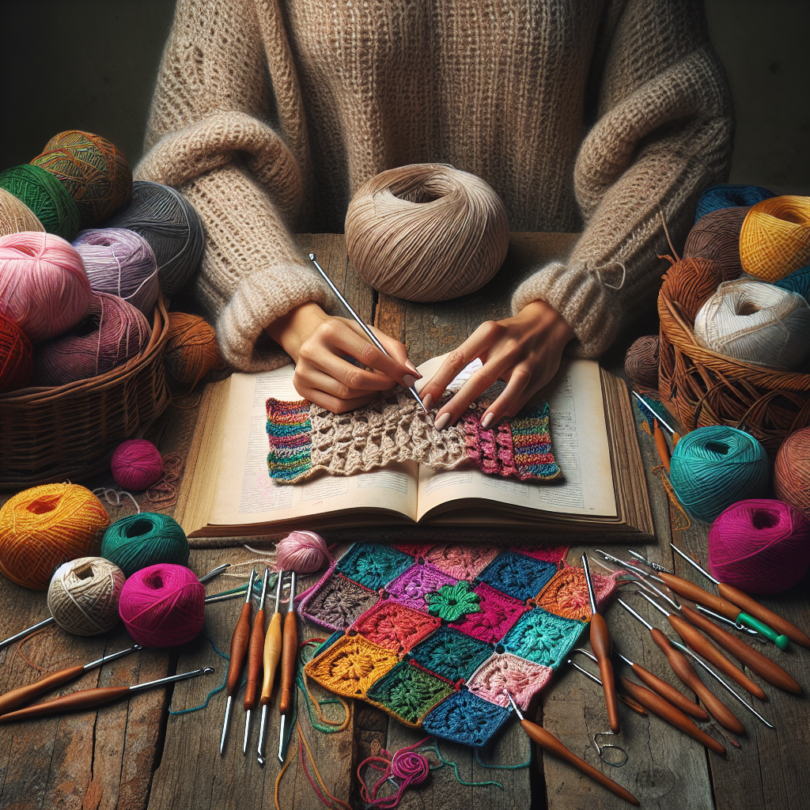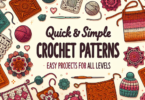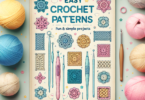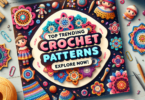Crochet is a delightful pastime that combines creativity and relaxation, allowing crafters to transform simple yarn into beautiful items. If you’ve already grasped the basics and are looking to elevate your skills, you’ve come to the right place! This blog post dives into advanced crochet techniques, offering tips, tutorials, and plenty of inspiration to help you master your craft.
Why Master Advanced Crochet Techniques?
As with any art form, mastering advanced techniques allows you to express your creativity with more depth and sophistication. Here are a few reasons why it’s worth delving into advanced crochet techniques:
- Creative Freedom: With advanced skills, you can create intricate patterns and designs that challenge your imagination.
- Problem Solving: You’ll learn to tackle more complex projects, honing your problem-solving skills along the way.
- Unique Projects: Advanced techniques open the door to unique pieces that can impress friends and family.
Essential Advanced Crochet Techniques
1. Tunisian Crochet
What is Tunisian Crochet?
Tunisian crochet, often regarded as a hybrid between knitting and traditional crochet, involves using a longer hook (Tunisian hook) to create beautiful, textured fabrics.
Tips for Tunisian Crochet:
- Choose the Right Yarn: Opt for smooth yarn with a bit of stretch for better stitch definition.
- Practice the Basics: Start with the simple Tunisian simple stitch before moving on to more complex stitches, like the Tunisian purl.
Tutorials:
- Beginner’s Tunisian Crochet Tutorial: Watch Here
- Tunisian Crochet for Intermediate: Watch Here
2. Crochet Cables
What Are Crochet Cables?
Crochet cables add depth and texture to your projects, resembling the intricate patterns seen in knitted cables.
Tips for Creating Cables:
- Use Stitch Markers: Mark your cable stitches to keep track of their placement.
- Practice on Swatches: Before committing to a project, practice cables on a small swatch to build confidence.
Tutorials:
- Introduction to Crochet Cables: Watch Here
- Cabled Beanie Pattern: Watch Here
3. Filet Crochet
What is Filet Crochet?
Filet crochet is a technique where you create patterns by combining filled and unfilled squares, often resulting in stunning images or motifs.
Tips for Filet Crochet:
- Follow Charts Carefully: Filet crochet heavily relies on charts, so make sure to study them before starting your project.
- Choose Appropriate Yarn: Lighter yarns work well for delicate designs, while thicker yarns can create bold, striking pieces.
Tutorials:
- Understanding Filet Crochet: Watch Here
- Filet Crochet Bookmark Pattern: Watch Here
4. Overlay Crochet
What is Overlay Crochet?
Overlay crochet adds a layer of color and texture to your work, allowing for striking designs and patterns.
Tips for Overlay Crochet:
- Keep Tension Consistent: Maintain consistent tension for neat, beautifully layered stitches.
- Color Choice Matters: Choose contrasting colors for the best visual impact.
Tutorials:
- Beginner’s Guide to Overlay Crochet: Watch Here
- Overlay Flower Coaster Pattern: Watch Here
5. Crochet Broomstick Lace
What is Broomstick Lace?
Broomstick lace creates a unique, airy texture by using a broomstick (or large knitting needle) alongside your crochet hook.
Tips for Achieving the Best Broomstick Lace:
- Use a Sturdy Yarn: Choose yarn that holds its shape well.
- Practice Your Tension: A relaxed tension will yield better results.
Tutorials:
- Broomstick Lace Basics: Watch Here
- Broomstick Lace Scarf Pattern: Watch Here
Conclusion
Mastering advanced crochet techniques not only enhances your skills but also empowers you to create unique and beautiful works of art. Whether you’re interested in Tunisian crochet, cabling, filet crochet, overlay techniques, or broomstick lace, each technique offers a fresh avenue for creativity. Embrace the journey, practice regularly, and soon you’ll find yourself producing stunning crochet pieces that showcase your newfound skills!
FAQs
-
What is the best yarn for advanced crochet techniques?
- A smooth and durable yarn is ideal. Consider cotton or bamboo blends for their versatility.
-
How can I improve my crochet tension?
- Practice regularly, maintain a relaxed grip on your yarn, and double-check your hook size against your yarn weight.
-
Do I need special hooks for Tunisian crochet?
- Yes, you’ll need a Tunisian hook, which is typically longer than standard crochet hooks.
-
Can I use basic patterns for advanced techniques?
- Absolutely! You can enhance basic patterns with advanced techniques by adding cables or overlay stitches.
-
What is the difference between regular crochet and Tunisian crochet?
- Regular crochet works row by row, while Tunisian crochet is completed in two passes—one for picking up stitches and another for creating the fabric.
-
How do I read crochet charts?
- Crochet charts use symbols to represent stitches. Familiarize yourself with these symbols to interpret patterns accurately.
-
Is there a specific yarn weight best for advanced techniques?
- It depends on the technique and project; however, medium weight yarn (worsted) is often a good starting point for many advanced techniques.
-
What tools do I need for broomstick lace?
- A large crochet hook, a broomstick (or knitting needle), and additional smaller hooks depending on the stitch pattern.
-
Are there beginner-friendly projects for advanced techniques?
- Yes! Start with tutorials that offer step-by-step instructions like coasters or simple scarves.
- Can I combine different advanced techniques in one project?
- Definitely! Mixing techniques can lead to stunning results, so don’t be afraid to experiment.
With these tips, tutorials, and a little practice, you’re all set to take your crochet skills to the next level. Happy crocheting!







Leave a Comment